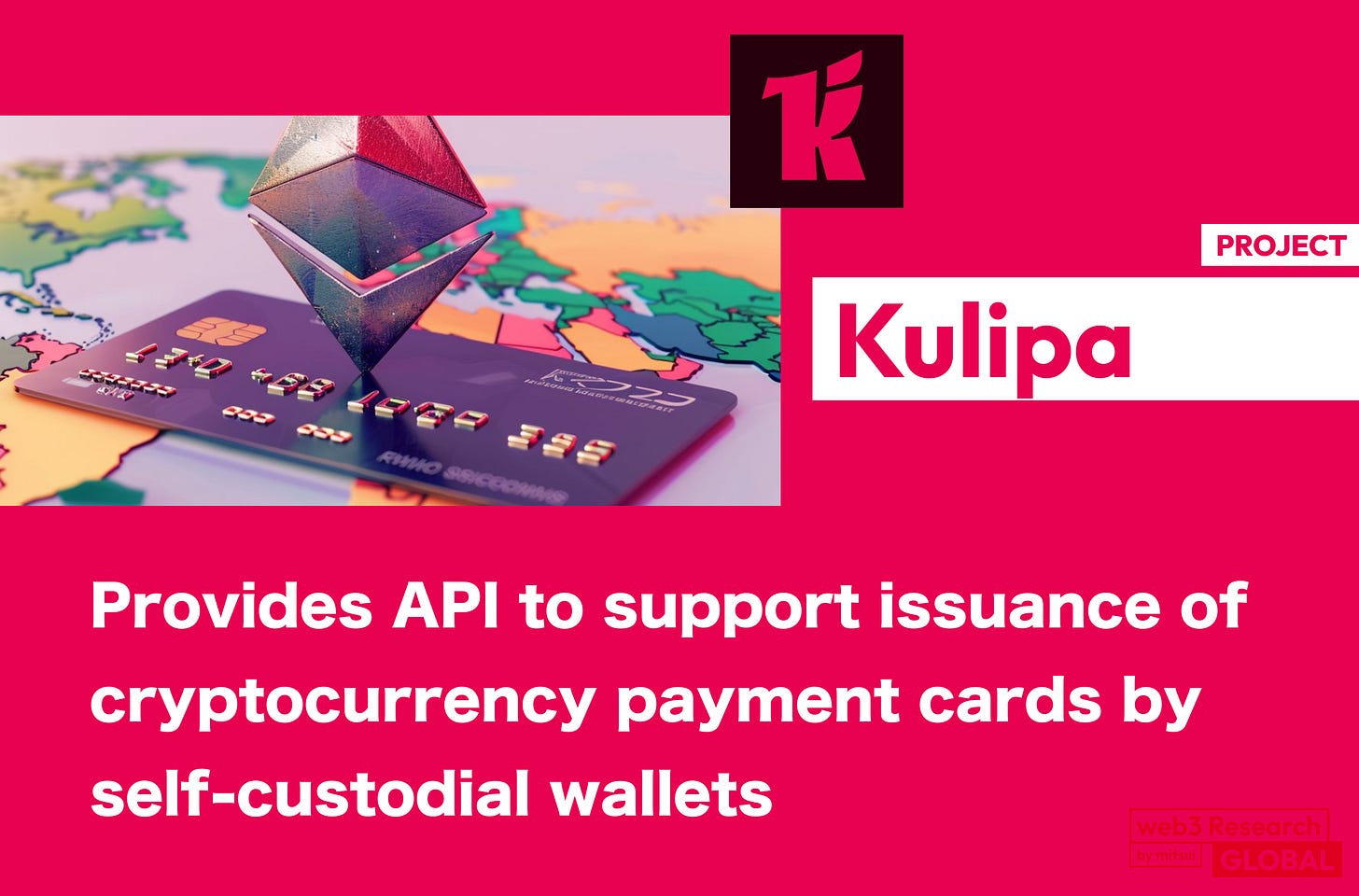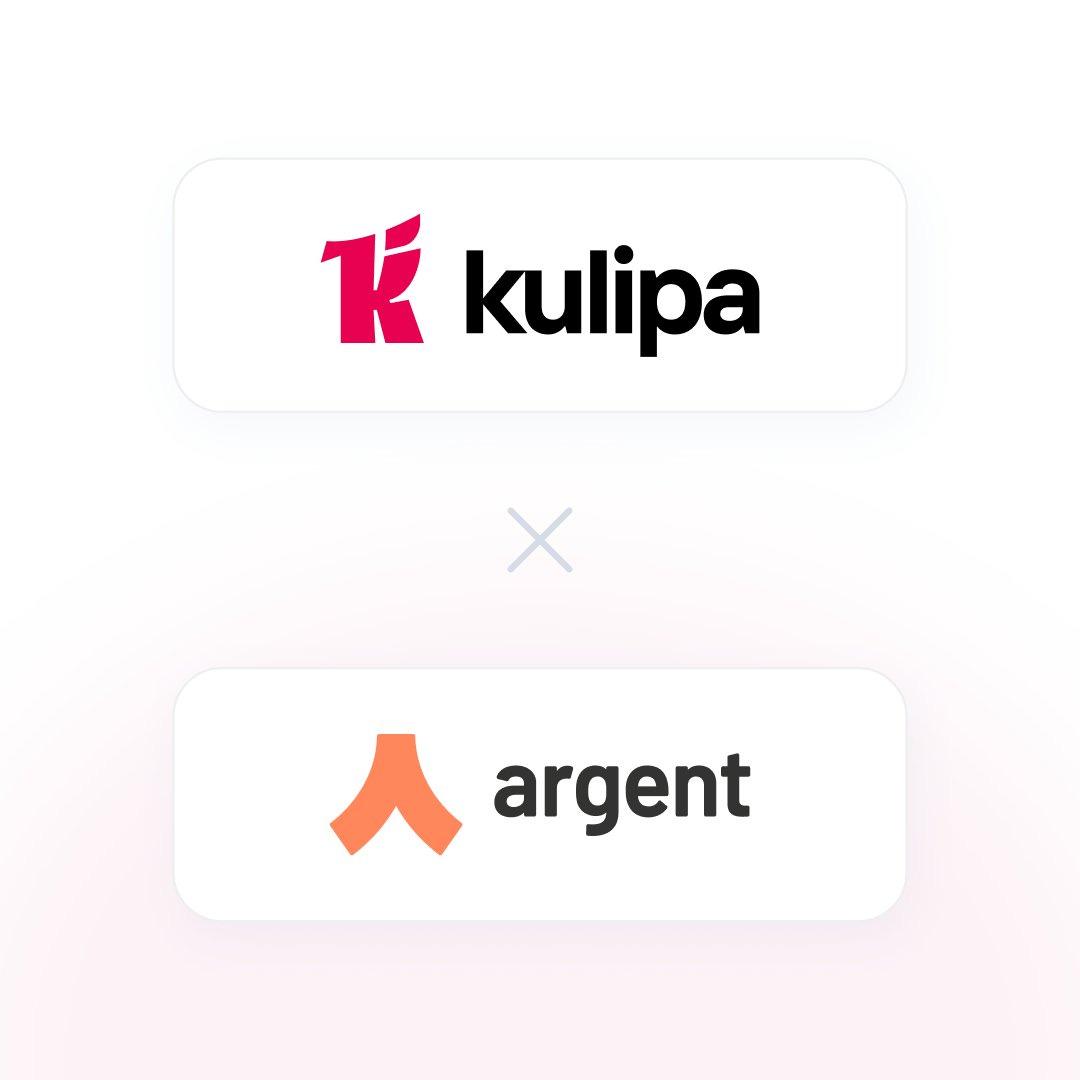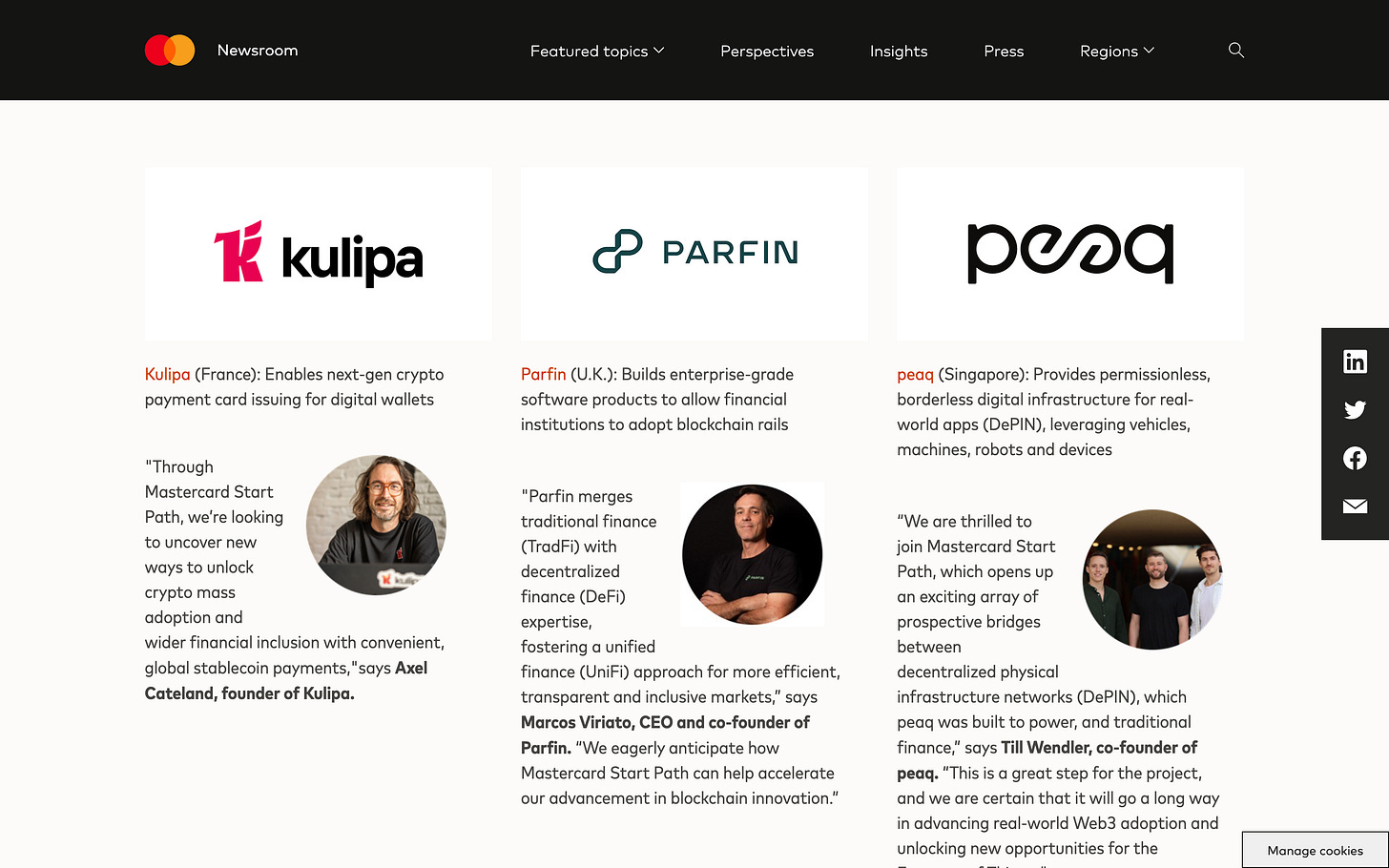【Kulipa】Provides API to support issuance of cryptocurrency payment cards by self-custodial wallets / Wallet operators can issue debit cards with custom design and features / @KulipaXYZ
Good positioning.
Good morning.
Mitsui from web3 researcher.
Today we will discuss Kulipa.
🔴What is Kulipa?
💳Card Features
💬To a world where anyone can use crypto asset payments
🔴What is Kulipa?
"Kulipa" is a platform that provides an API to support the issuance of cryptocurrency payment cards through self-custodial wallets.
To complicate things a bit, the customer of "Kulipa" is a self-custodial wallet provider.
For example, when MetaMask uses the "Kulipa" API, it can issue a MasterCard-connected debit card.The end user (MetaMask user) can then use the card to make card payments using their own MetaMask funds.
Debit card projects that allow for crypto asset payments tied to wallets have emerged recently, but most of them are implemented by wallet providers.Kulipa" will make it easier for wallet providers to issue their own branded debit cards.
💳Card Features
This section describes the debit cards that can be issued and the characteristics of the API provided.
Physical or Digital Card: Both physical cards can be issued or only on digital.
Mobile First: Integration with Apple Pay® and Google Pay™ for payments from smartphones.
Fast and secure transactions: Instant payments provide wallets and users with seamless payment and security reassurance.
Brand-ready: Can be changed to a design corresponding to your brand.
Customizable: Depending on the API design, various conditions such as gas sponsorship and KYC rules can be freely customized.
Multi-chain support: Support for any blockchain, including EVM chain, L2, Solana, etc.
All-in-one dashboard: Wallet providers can view all their usage in one dashboard.
These are the features.
Ostensibly a MasterCard debit card payment, there is no need for the merchant to accept cryptocurrency (even if they know nothing about cryptocurrencies), and USDC is seamlessly converted to legal tender in the background, ensuring a smooth payment experience for everyone.
As a track record, Argent, a DeFi-focused wallet, has announced that it will issue MasterCard debit cards using Kulipa.
Kulipa will also be used by MasterCard to demonstrate the potential of blockchain togetherStart PathBlockchain and Digital Assets programhas been selected by five companies.
💬Towards a world where crypto asset payments are available to everyone
Now, the last thing to consider.
We have recently felt that more and more businesses are implementing crypto asset payments, and "Kulipa" was just the platform (API provider) to promote this.Indeed, it is quite a hurdle for each wallet business to implement the creation of debit cards.
First of all, it is necessary to partner with credit card companies such as Visa and Mastercard, and technical collaboration is also required.Careful implementation is required, especially since there must be no mistakes in real-world payments.
It is also troublesome for credit card companies to have conversations with each wallet provider to discuss development requirements.Therefore, an API mechanism such as "Kulipa" is beneficial for both wallet operators and credit card companies.
Wallet operators can issue debit cards customized for their wallets simply by incorporating the API, and credit card companies can increase the number of wallet operators and end users (card users) on their own.
Kulipa's positioning makes a lot of sense.It has been selected for MasterCard's program and has built a position that is promoted by officialdom, so there is a possibility that it will gain the first recall of wallet operators who want to make crypto asset payments.
In the future, it is possible that Kulipa will be incorporated as a WaaS or SDK feature, and all wallet operators will be able to issue debit cards as an option.I personally think that it would be a good idea to have a debit card as an option for existing credit cards and QR codes.
Personally, I am not inclined to use crypto asset payments anytime soon, since existing credit card and QR code mechanisms are also convenient, and currently crypto assets in wallets are often stored as assets, not living expenses.However, I believe that the movement to connect wallets with existing financial services as an outlet will become a major trend in the future.
For example, I think that crypto asset payments will expand into daily use if there are more benefits for users, such as double the point reward rate for users because of the low settlement fees on the back side.
We will continue to follow the various players.
This is my research on "Kulipa"!
🔗Reference/image credit: HP / X
Disclaimer:I carefully examine and write the information that I research, but since it is personally operated and there are many parts with English sources, there may be some paraphrasing or incorrect information. Please understand. Also, there may be introductions of Dapps, NFTs, and tokens in the articles, but there is absolutely no solicitation purpose. Please purchase and use them at your own risk.
About us
🇯🇵🇺🇸🇰🇷🇨🇳🇪🇸 The English version of the web3 newsletter, which is available in 5 languages. Based on the concept of ``Learn more about web3 in 5 minutes a day,'' we deliver research articles five times a week, including explanations of popular web3 trends, project explanations, and introductions to the latest news.
Author
mitsui
A web3 researcher. Operating the newsletter "web3 Research" delivered in five languages around the world.
Contact
The author is a web3 researcher based in Japan. If you have a project that is interested in expanding to Japan, please contact the following:
Telegram:@mitsui0x
*Please note that this newsletter translates articles that are originally in Japanese. There may be translation mistakes such as mistranslations or paraphrasing, so please understand in advance.







